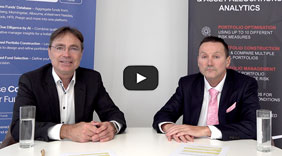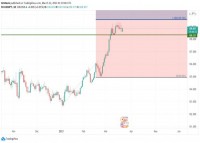|
by Bailey McCann  Opportunistic private equity real estate funds raised more money than any other fund type in the private equity real estate market during 2012, according to a new report from PERE. Opportunity funds, which seek to take advantage of declining asset prices to invest in properties at significant discounts (considered higher on the risk-return spectrum than core or valueadd funds), raised $35.5bn in 2012 or 45% more than in 2011, promising numbers for an industry that led the crisis in 2008. A significant proportion of this total was accounted for by Blackstone's Real Estate Partners' VII fund. It collected $13.3 billion, making it the largest real estate opportunity vehicle ever raised. Among the fund types enjoying strong investor interest were debt funds, a trend that looks set to continue. "It has yet to show itself in the data, but we are currently seeing a strong uptick in demand from institutional investors for debt products," said Erik Kolb, senior editor PERE. "We see this as a function of banks pulling back on lending activity, but it also provides evidence of continued risk aversion among parts of the LP community." Even though parts of the LP community remain cautious many others are looking for new opportunities. Private Equity Strategies spoke with Andy Graiser, Co-President at A&G Realty Partners, a New York firm specializing in real estate dispositions, lease restructurings, facilitating growth opportunities, valuations and acquisitions he says that the recovery is starting to show up in pockets of opportunity nationwide - much of that in the commercial sector. "If you look at the reports that came through the international conference of shopping centers last year, there's a lot of new real estate, more than there was before," Graiser says. "You're seeing buyers take more of a real estate based approach and not just buying financially, looking for that 4% yield." According to the PERE study, in terms of geographic focus, funds with a global investment mandate collected the largest amount: $24.7bn in 2012. North America-focused funds secured a similar amount - $23.2bn - while those looking to invest in Western Europe showed a marked decline on 2011, raising only $6.9bn. At present there are 585 private equity real estate funds in the market, targeting an aggregate total of $209.2 billion. Investors are still looking at North America as their preferred location for investment, although Western Europe and Asia are following closely behind. In terms of a residential recovery, Graiser see pockets in Florida, and around larger cities. Those developments often come in the form of mixed-usebuildings, which can have implications for pure-play residential or commercial-only funds. "I think younger people are not all inclined to think that you have to buy a piece of the American dream by buying a piece of real estate - therefore renting and multi family buildings make sense for a lot of people right now," Graiser says. The trend toward mixed-use buildings may also be the result of compression factors in retail like the Amazon effect. Smaller retailers are facing increasingly bigger challenges when it comes to competing with massive online retailers like Amazon. Show rooming, or, the practice of looking at an item up close and but subsequently buying it online for a lower price is commonplace. Smaller retailers also typically have a smaller online presence and may not offer products through their websites at all. For smartphone savvy consumers, they may lose out to a sale made on the web from inside another store. "I think you have to really start to look at the Amazon effect if you're looking at real estate. If someone had asked me five years ago about amazon and what they'd be doing to retail, I don't think we would have predicted this. That said, there is still enough growth in different areas like dollar stores, or restaurants that you can find those pockets of activity," Graiser explains. He notes that one of the biggest surprises lately is the growth of stores like Dollar General. Dollar General recently introduced a new format, which includes the sale of groceries. This brings the store closer to competing with low price stores like Walmart. Even though Walmart is primarily known as a big-box mega retailer, it too has been shifting its format introducing smaller, marketplace stores that feel more like hometown grocery stores and less like superstores. "I think going forward we're going to see a lot of changes in the formats available to consumers and that will have an impact on how real estate is viewed," Graiser says. "Real estate now is not all about getting the best yield. It's about understanding the real estate first and figuring out what the returns are." | |
|
This article was published in Opalesque's Private Equity Strategies our monthly research update on the global private equity landscape including all sectors and market caps.
|
Private Equity Strategies
Movers & Shakers: Real Estate Finds New Life After 2008 |
|





 RSS
RSS










